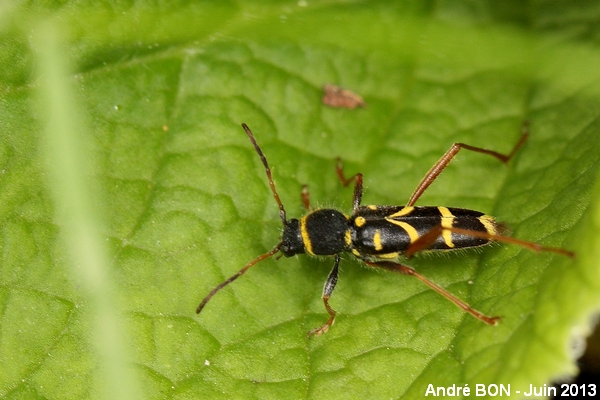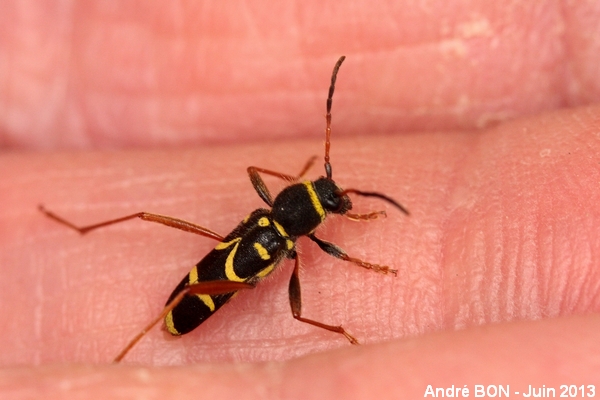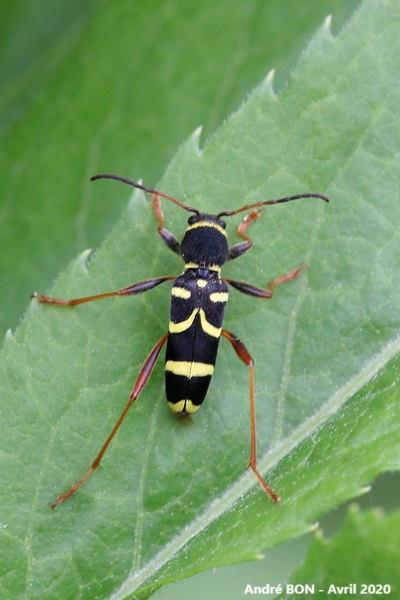



| Wasp Beetle (Clytus arietis (Linnaeus, 1758)) |




|
|
Scientific name: Clytus arietis (Linnaeus, 1758) Common name: Wasp Beetle French name: Clyte bélier Order: Coleoptera Family: Cerambycidae Wingspan : Body size: 6 to 15 mm. Biotope: Clearings, woodland edges, hedgerows and any other place where you can find dead wood, heaps of wooden logs, etc. Adults are often observed on flowers where they feed on pollen and on nectar. Geographic area: Europe, Russia, Caucasus, Transcaucasia, Turkey, Iran. Observation period : April to August. |
With its black and yellow colours, its mobility, the movements of its antennae and its flight, the Wasp Beetle do mimic a wasp. However this is a totally harmless insect at the adult stage. There are several species of longhorn beetles with the same basic colours. The Wasp Beetle bears a continuous yellow band at the front of the pronotum and there is no marking in the middle of the pronotum. Only Clytus rhamni shows an identical pronotum. You can tell both species apart based on the orientation of the yellow marks located on each side at the front of the elytra. These marks are perpendicular to the elytra's edges on the Wasp Beetle while they are oblique on Clytus rhamni. Furthermore Clytus rhamni has reddish antennae on their whole length while the Wasp Beetle has dark-tipped antennae. I addition to the previously mentioned marks the Wasp Beetle bears an often interrupted yellow band at the base of the prothorax and a rounded yellow central spot at the front of the elytra. Following the two small lateral marks, the elytra are crossed by 3 broad yellow bands. The first one is curved and draws some kind of a V-shape, the second one is straight and the last one is located at the tip of the elytra. The legs are reddish with darkened femora. Larvae grow in dead wood during two years. |
| [To know more about the Wasp Beetle] [Next picture] [Top] |

|
A continuous yellow band at the front of the pronotum, a pronotum without any yellow marking in the middle, two marks perpendicular to the edges of the elytra and antennae with a black tip, no doubt, this one is a Wasp Beetle (Clytus arietis). |
| [To know more about the Wasp Beetle] [Next picture] [Previous picture] [Top] |

|
I have observed this Wasp Beetle on the foliage of one Hazelnut tree growing in my garden. |
| [To know more about the Wasp Beetle] [Next picture] [Previous picture] [Top] |

|
Having tried to push the Wasp Beetle to an open place among the foliage in order to shoot a better picture it greatly helped me by landing on my hand. |
| [To know more about the Wasp Beetle] [Previous picture] [Top] |

|
New view quite early in the season, we must be here at the beginning of the observation period. |